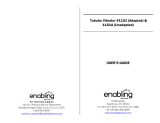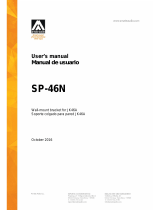
Safety
5.9 General safety instructions for power tools
20
Operator’s Manual | ACBe | 5100051220 | 10/2019 | [en]
– Avoid an abnormal posture. Ensure you have good footing
and keep your balance at all times. In this way, you can better
control the power tool in unexpected situations.
– Wear appropriate clothing. Do not wear loose clothing or
jewelry. Keep your hair, clothing and gloves away from mov-
ing parts. Loose clothing, jewelry or long hair can be caught in
moving parts.
– If dust extraction and collection mechanisms are attached,
make sure that these are connected and properly used. Use
of a dust extraction mechanism can reduce hazards from dust.
4) Use and handling of the power tool
– Do not overload the equipment Use the power tool intended
for your work You will work better and more safely in the speci-
fied power range with the right power tool.
– Do not use a power tool whose switch is defective. A power
tool that can no longer be switched on or off is dangerous and
must be repaired.
– Pull the plug out of the outlet and/or remove the battery be-
fore making equipment adjustments, replacing accessory
parts or putting away the equipment. These safety precautions
prevent the accidental starting of the power tool.
– Store unused power tools out of the reach of children. Do not
allow people to use the equipment who are not familiar with
it or have not read the instructions. Power tools are dangerous
if they are used by inexperienced persons.
– Maintain the power tools with care. Check whether moving
parts function flawlessly and do not jam, whether parts are
broken or whether they are so damaged that they impair the f
unction of the power tool. Have damaged parts repaired be-
fore application of the equipment. Many accidents are caused
by poorly maintained power tools.
– Keep cutting tools sharp and clean. Carefully maintained cut-
ting tools with sharp cutting edges jam less frequently and are
easier to guide.
– Use power tools, accessories, insertion tools, etc. in accor-
dance with these instructions. In doing so, note the working
conditions and the work to be carried out. The use of power
tools for applications other than those intended can lead to dan-
gerous situations.
5) Use and handling of the battery-powered tool
– Only charge the batteries in battery chargers that are recom-
mended by the manufacturer. For a battery charger that is suit-
able for a certain type of batteries, there is a risk of fire if it is used
with other batteries.
– Only use the intended batteries in the power tools. The use of
other batteries can lead to injuries and a risk of fire.
– Keep the unused battery away from paper clips, coins, keys,
nails, screws and other small metal objects that could cause
a bridging of the contacts. A short circuit between the battery
contacts can lead to burns or a fire.






















